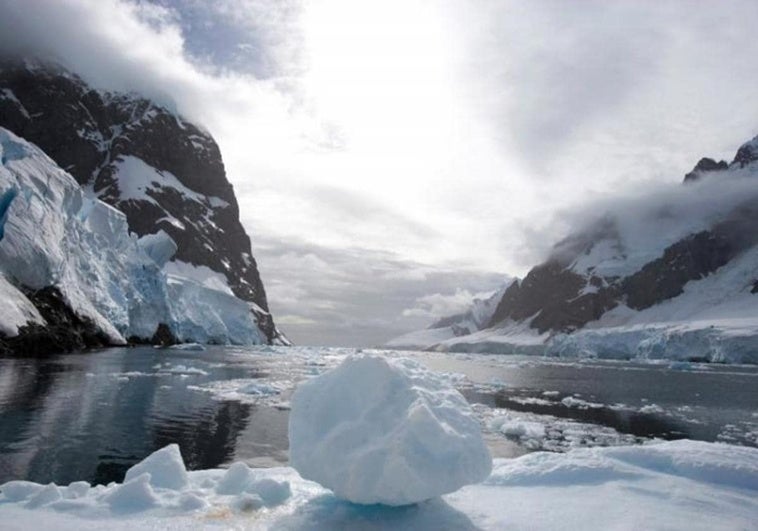Spanish scientists discover that the ocean cools the climate more than previously believed
An unquantified sea-produced sulphur gas is shown to increase global warming counteracting clouds by 30-70%
Two Spanish teams from the Consejo Superior de Investigaciones Científicas (CSIC - Spain's national research centre) have discovered that the activity of the oceans contributes more than previously thought to slowing global warming. The scientists have calculated how much methanethiol, a sulphur gas that cools the climate by forming clouds, is emitted by the sea into the atmosphere, which was previously unknown. They have certified that the oceans could contribute between 30% and 70% more to counteracting global warming than previously thought.
These marine sulphur derivatives can be said to behave in exactly the opposite way to CO2 (carbon dioxide) and the other greenhouse gases, whose increasing presence in the atmosphere is the main cause of climate change. The seas are not only a natural basin that captures and retains part of the CO2 that the burning of fossil fuels and other human activities release into the atmosphere, but they also play an active role in cooling the Earth through their sulphur emissions.
For four decades, it has been hypothesised, supported by much research, that microscopic plankton living on the surface of the seas produce sulphur in the form of a gas, dimethyl sulphide, which, once in the atmosphere, oxidises to form small particles called aerosols. Aerosols reflect part of the sun's radiation back into space and therefore reduce the heat retained by the earth, unlike greenhouse gases. The cooling effect of aerosols is further multiplied by the fact that they are essential for the condensation of water droplets and the formation of optically dense clouds, the climatic element with the greatest cooling capacity.
The smell of seafood
Until now, the cooling capacity of the oceans was only calculated on the basis of the emission of dimethyl sulphide, the main factor responsible for the characteristic smell of seafood. But thanks to the work of a team from the Institute of Marine Sciences (ICM) and another from the Blas Cabrera Institute of Physical Chemistry (IQF), we now know that marine activity significantly releases another sulphur derivative into the atmosphere, methanethiol, because both groups of CSIC scientists have found a way to quantify, on a planetary scale, where, when and in what quantity this emission occurs.
Their conclusion, published in the Science Advances journal, is that methanethiol increases known marine sulphur emissions by an average of 25% annually. In other words, the sea emits 25% more sulphur than previously thought. But not only does it release more of the cooling gas, it also multiplies its effects, because methanethiol is more efficient at oxidising and forming aerosols than dimethyl sulphide, and therefore its climate impact is much more powerful.
The climate models into which the researchers have incorporated their findings on marine methanethiol indicate that the hitherto unquantified amounts allow for a 30-70% increase in sulphur aerosol formation over the Southern Ocean, which decreases the incident solar radiation output in summer by between 0.3 and 1.5 watts per square metre.
"Current climate models greatly overestimate the solar radiation that we know actually reaches the Southern Ocean mainly because they are not able to correctly simulate clouds. Incorporating this new sulphur emission - as this finding does - will bring the model a little closer to reality," says Rafel Simó, from the ICM-CSIC and one of the coordinators of the study.
Good, but insufficient
The Spanish assessment of the benefit of marine methanethiol emissions on the planet's radiation balance also indicates that the impacts are much more visible in the southern hemisphere because there are fewer continents and less human activity, and the presence of sulphur from burning fossil fuels is lower. "This is where the study shows us what the ocean's influence on the climate was like before the industrial revolution," explains Alfonso Saiz-López, from the IQF-CSIC, the other coordinator of the study and the person responsible for the modelling.
The Spanish experts say that their research is further proof that the oceans not only capture and distribute the sun's heat by taking part of the carbon dioxide that humans release into the atmosphere, but also produce gases and particles with immediate climatic benefits. Despite this good news, these scientists warn, no matter how much positive work the oceans do, "the scale of the impact of human activity is such that the planet is warming and will continue to warm if nothing is done about it", if the emission of CO2 and similar substances into the atmosphere is not drastically reduced.

